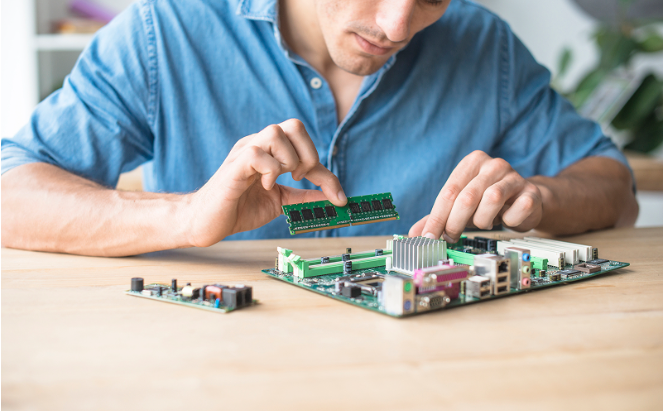Beneath the hum of high-tech gadgets and sleek devices lies a hidden world: PCB Fabrication and Manufacturing in Singapore, and Electronic Manufacturing Services in Singapore. Often overlooked, this domain transforms ideas into functional circuits that power innovation. Whether you’re an engineer, startup founder, or manager, you’ll gain insights to accelerate your hardware journey. In this article, we’ll uncover how these services intertwine with everyday life, what early victories look like, pivotal turning points, maintaining momentum, and strategies to maximise results.
The Invisible Tech Ecosystem
PCBs are the foundation of daily technology. From IoT sensors adjusting home thermostats to wearables tracking health metrics, they’re everywhere.
Delivered by PCB Fabrication firms in Singapore, boards arrive ready for assembly with zero fuss. These services integrate with developers’ routines by offering fast prototyping and same-day consultations.
Engineers don’t need to mail fragile boards overseas or wait weeks. Instead, prototypes are ready within days.
Once assembled, these boards make high-precision manufacturing an everyday reality. Such seamless integration ensures electronic manufacturing services in Singapore are not distant processes but embedded workflow essentials that empower innovation.
Measuring Momentum
When is a PCB venture genuinely taking off? One telltale sign is consistent iteration. A developer receives three revision cycles, each improving trace clearance, fixing soldering issues, and enhancing signal integrity. This loop signifies success—rapid cycles, reduced errors, and increased confidence.
Another indicator is multidisciplinary collaboration: procurement learns component lead times. Testing teams validate compliance and firmware devs optimise layout based on real tests.
These synergies reflect a mature PCB Manufacturing ecosystem in Singapore. When these early stages yield boards that reliably function under test conditions, you know your hardware foundation is firm and that’s where real momentum begins.
From Prototype to Production
Prototype is great, but what happens when you scale? The transition from small runs to pilot or mass production can be daunting.
True turning points include introducing multilayer boards, integrating blind vias, or shifting from hand-soldered prototypes to full assembly via electronic manufacturing services in Singapore.
At this stage, success depends on quality controls, lead times, and cost efficiency. For instance, swapping from a two-layer board to a six-layer layout with controlled impedance can reduce RF interference—but only if the process is reliable.
These pivot moments—like successful environmental or thermal tests, achieving EMC compliance, or ramping PCB assembly—mark the journey from concept to commercial product. They validate both the design and the supporting manufacturing ecosystem.
Sustaining Hardware Passion
Building hardware can be tricky—delays, assembly failures, thermal anomalies, and even PCB warping can dampen morale. That’s why maintaining enthusiasm is vital.
One method is celebrating small wins—the first successful power-on, passing impedance tests, or receiving flawless batch results.
Another is peer collaboration: visiting local EMS partners, understanding their capabilities firsthand, or attending design-for-manufacture workshops. When developers see boards being built, prodded, and packaged locally, the process becomes tangible and inspiring.
With regular progress reviews and prototyping achievements, teams stay motivated. In Singapore, where PCB Fabrication and assembly often happen within walking distance, the energy from local collaboration becomes a driving force and propels the next innovation cycle.
Getting the Most from Local Partners
Even with excellent prototyping and momentum, projects can stall if relationships with fabrication partners aren’t optimised. Here are tactics to get the most out of local PCB services:
- Communicate early: Share design files ahead of production runs to get manufacturability feedback.
- Request DFM reviews: Help catch issues like insufficient trace widths or layer misalignment before tooling begins.
- Align assembly and fabrication: Ensure boards and components fit via local EMS capabilities in Singapore.
- Benchmark turnaround times: Compare standard vs. expedited options, especially for urgent hardware testing.
- Track KPIs: Monitor yield rates, defect trends, and first-pass success to guide production improvements.
By managing these aspects, engineers and managers can ensure their PCB Manufacturing in Singapore work runs smoothly, efficiently, and with predictability.
Conclusion
From everyday integration to production milestones, the journey through PCB Fabrication in Singapore and related services involves several crucial phases. It begins with rapid prototyping and iterating, then shifts through production pivots, keeps morale high with early wins, and is optimised through strong local partnerships. Whether crafting a wearable, sensor network, or IoT device, success depends on matching creativity with tools—local fabrication, assembly, and manufacturing services. The result is hardware innovation that’s both inspiring and executable, all within the vibrant Singapore ecosystem.
Connect with MPN Tech today to learn more.

